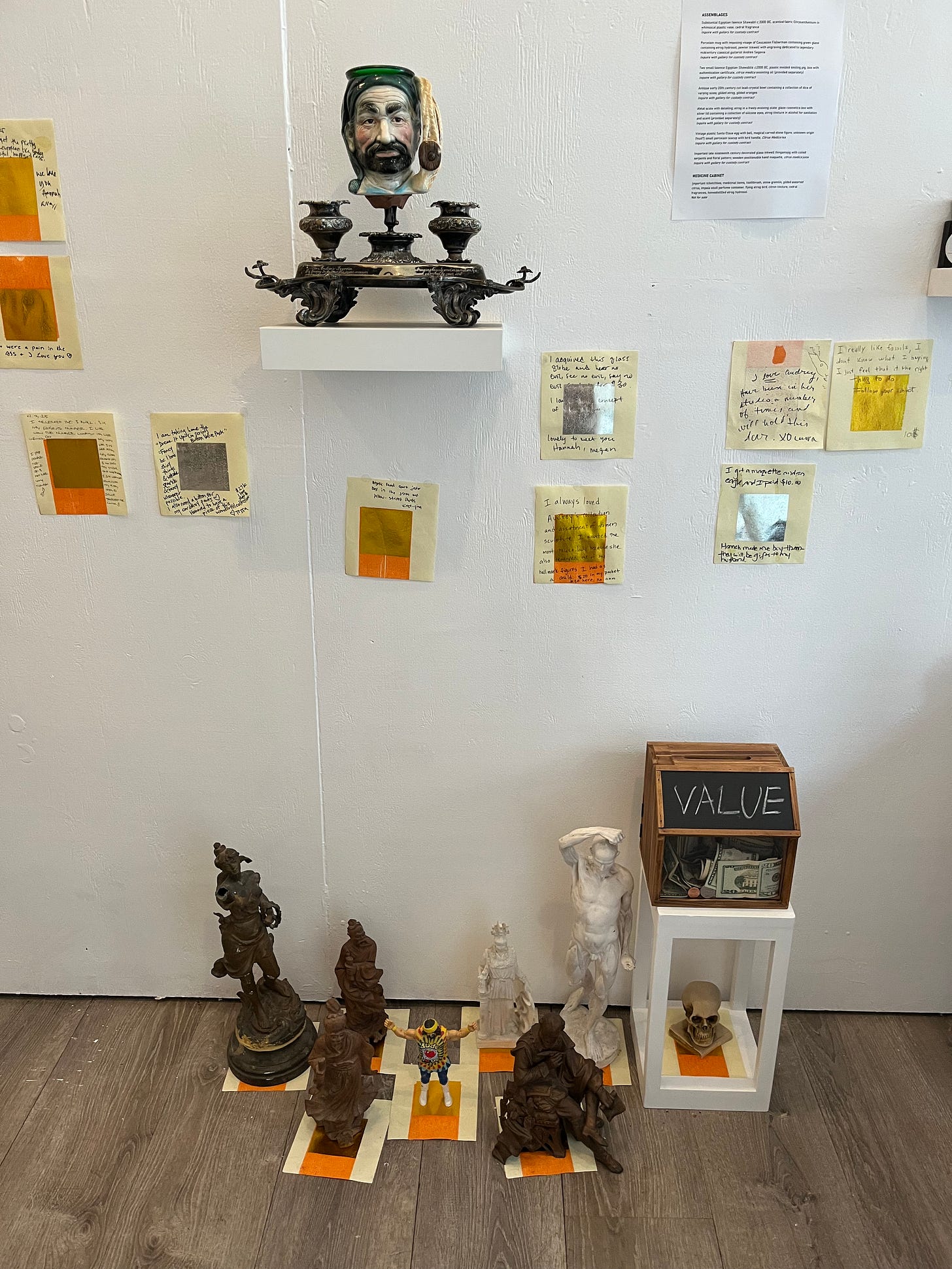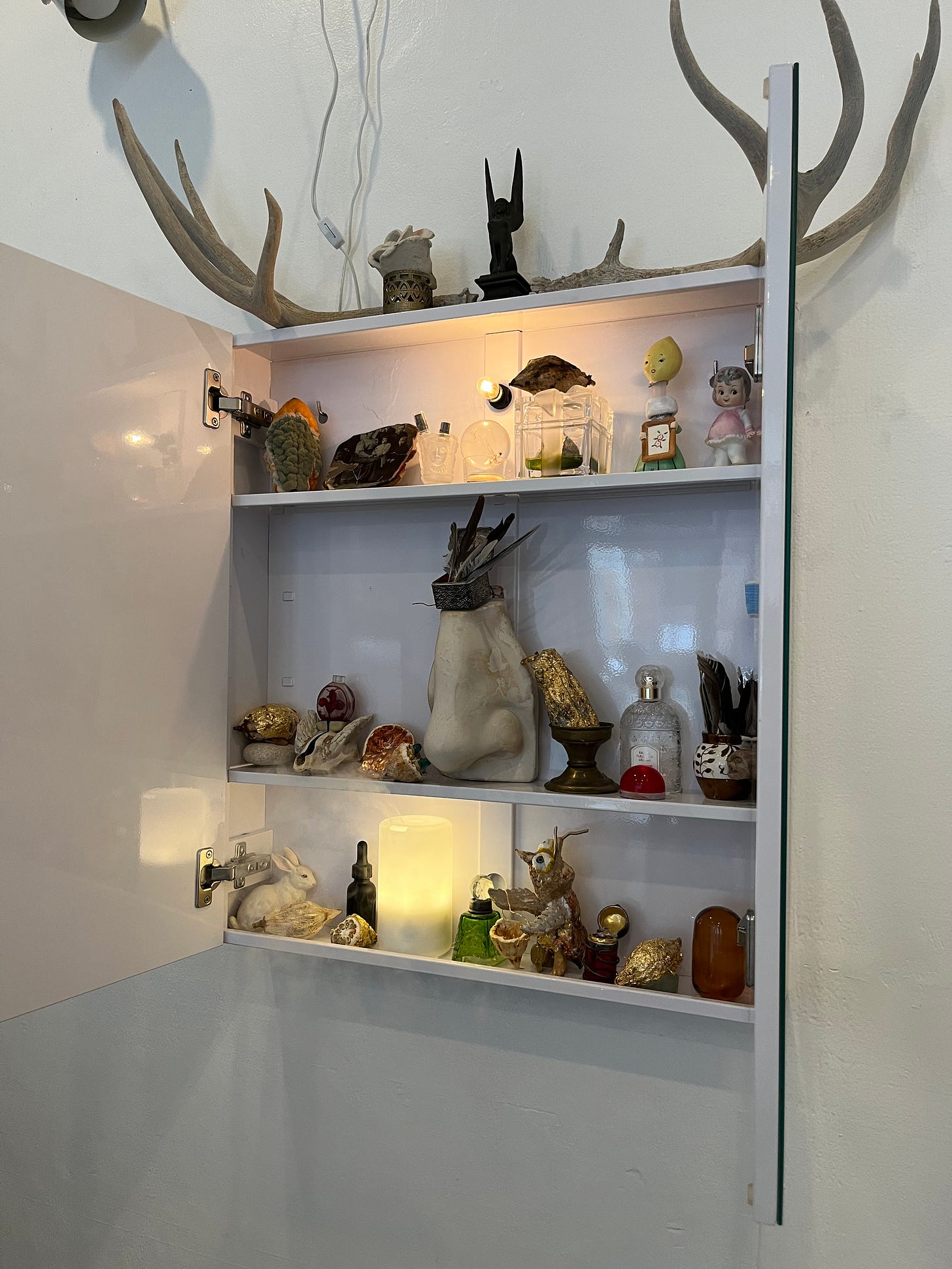The downtown gallery Olfactory Art Keller’s latest exhibition is a solo show for Hannah Marie Marcus, a moving tribute that transforms the gallery into an estate sale of objects from the collection of her late mother, the pioneering Photorealist painter Audrey Flack.
Arranged in a number of assemblages, nearly all the items displayed are available for the taking and the buyer can name their price. After selecting an item, the new owner writes why they selected the object on a piece of joss paper, sprays the paper with one of three citron-infused scents designed specifically for the exhibition, and affixes it to the wall. The proceeds from the estate sale are donated to the gallery and the joss paper memorials to the objects in Flack’s collection will be burned after the conclusion of the show. Most of the items are of indeterminate, but presumably relatively low, monetary value. This aspect of the work invites visitors to contemplate the subjective nature of value—the pieces were obviously of high value to Flack, but in the open market of the estate sale their new value is determined solely by the visitor.
The fragrant components of the exhibition are centered around citron, also known as Etrog, a citrus fruit that is a predecessor to the culinary cultivars we commonly enjoy such as lemons and limes. Marcus chose the fruit because it was an essential component of her mother’s favorite perfume, Eau de Fleurs de Cédrat by Guerlain. (Cédrat is the French name for citron). Marcus’s mother asked for a recreation of the perfume while she was living, and after her death the fragrance took on new significance. In the space of the gallery, it becomes a unifying force linking the objects to the viewer and to Marcus and Flack. At the center of the exhibit is a recreation of Flack’s medicine cabinet—transformed into a kind of altar by Marcus and underscoring the intimate, typically private nature of clearing out a loved one’s belongings. An aroma diffuser inside the cabinet disperses a citron-infused fragrance into the air.
I happened to visit the gallery while the artist was present and several of Audrey’s friends stopped by to chat with Marcus and choose objects. These friends shared tales of Audrey’s life and reminisced about her collection. The presence or absence of a personal relationship with the deceased surely influences one’s evaluation of value for her former belongings, as does an understanding of Flack’s place in the contemporary artistic canon. The press release conspicuously omits details about Flack, so casual visitors who aren’t familiar with contemporary art might not know that she was a highly acclaimed artist who has work in every major museum in New York City and often sells for hundreds of thousands of dollars at auction.
The proximity to celebrity adds another axis on which we can assess value—an otherwise worthless object suddenly becomes valuable purely on the basis of the owner’s prominence in society. Costume jewelry, ordinary clothing, even notes and other detritus routinely sell for thousands of dollars above their typical value at auction when the name attached to them is famous.
Several of the assemblages contain items that are objectively more monetarily valuable than the part of the collection that is available for public consumption. These objects are specifically set aside by Marcus to be taken into a reciprocal custody agreement with specific individuals who will meet certain requirements for continued custody of the assemblage for a period of time. All of these assemblages have a sort of fragrant ritual maintenance associated with them, such as filling a small basin with fragrant oil or anointing a citron fruit.
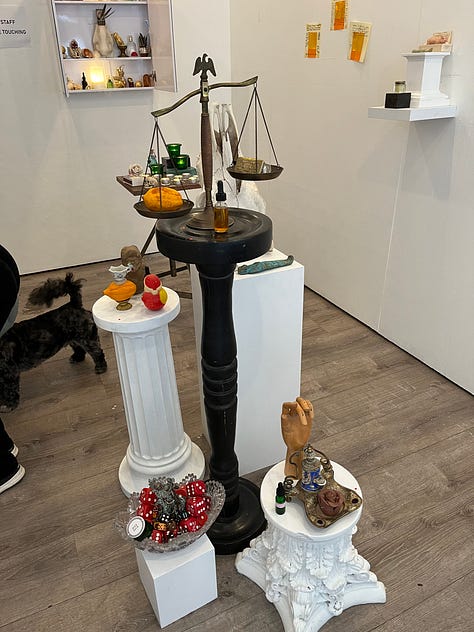

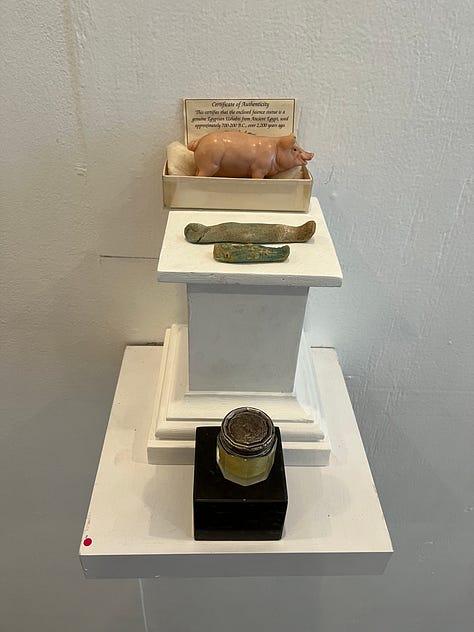
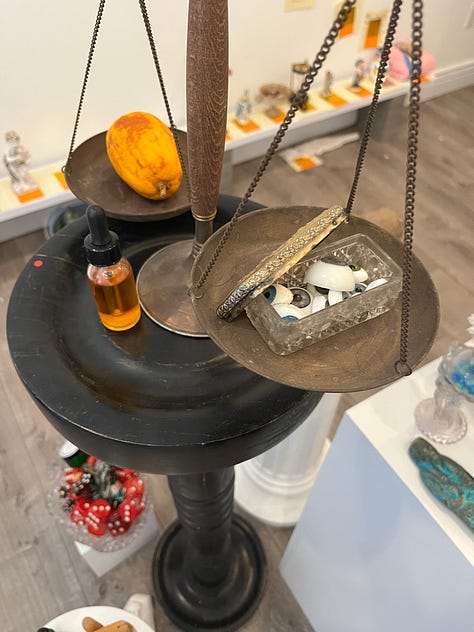

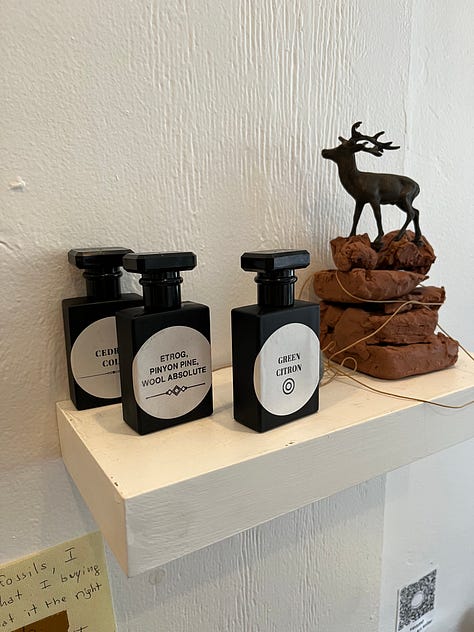
Every collector wonders what will happen to their collection after they are gone. Having it transformed into a work of interactive art where friends and strangers alike can make your treasures their own is a beautiful ending for a lifetime of gathering and curating objects and is perhaps one of the best outcomes one could hope for when it comes to the discharge of their belongings.
I chose to take custody of a little plastic nose, clearly once belonging to…something. A doll perhaps? A game of some sort? Marcus didn’t know where the nose originally came from, but she said her mother had numerous objects like it—items that she used for references in her art. It joins an assortment of similar small, somewhat ephemeral art objects that now make up a tiny part of my overall collection—a puzzle piece from a Yoko Ono performance, a piece of black candy from a Felix Gonzalez-Torres work. One day, after I’m gone, someone will sort through these objects and perhaps they will be charmed by the little plastic nose as I was, but probably not. They’ll probably just throw it away.

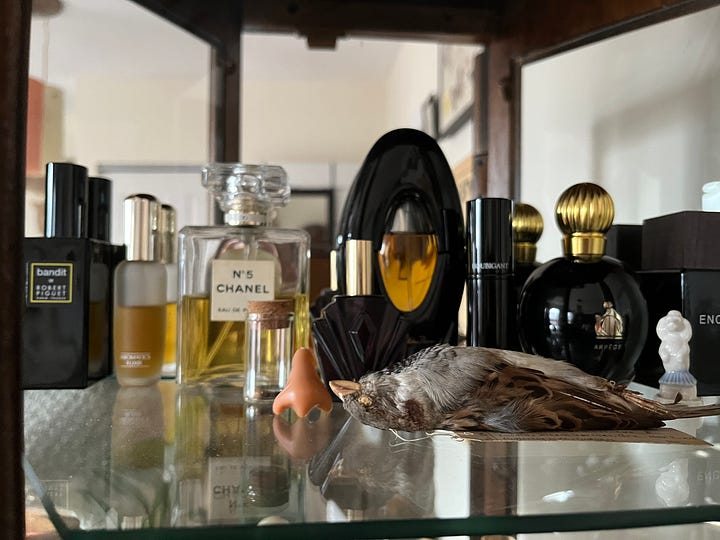
Hannah Marie Marcus’s Commodity Exchange is on view until April 19. Olfactory Art Keller is located at 25 Henry Street, New York, NY 10002.
A special event with the artist will take place at the gallery this evening:
On Saturday, April 5 from 4pm to 6pm, Marcus will be in the gallery for a collaborative hallucination of value aided by cedrat peel the artist candied for the occasion. Marcus will talk about the curious objects of undetermined value left behind by her mother, the photorealism pioneer Audrey Flack, that visitors can purchase for a price of their choosing. Cedrat-based cocktails will be served.



